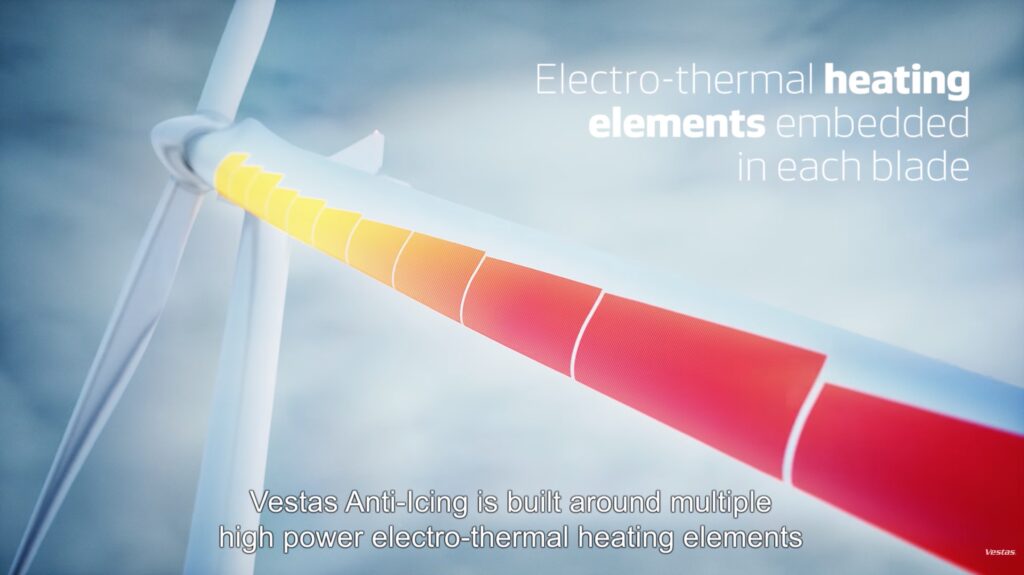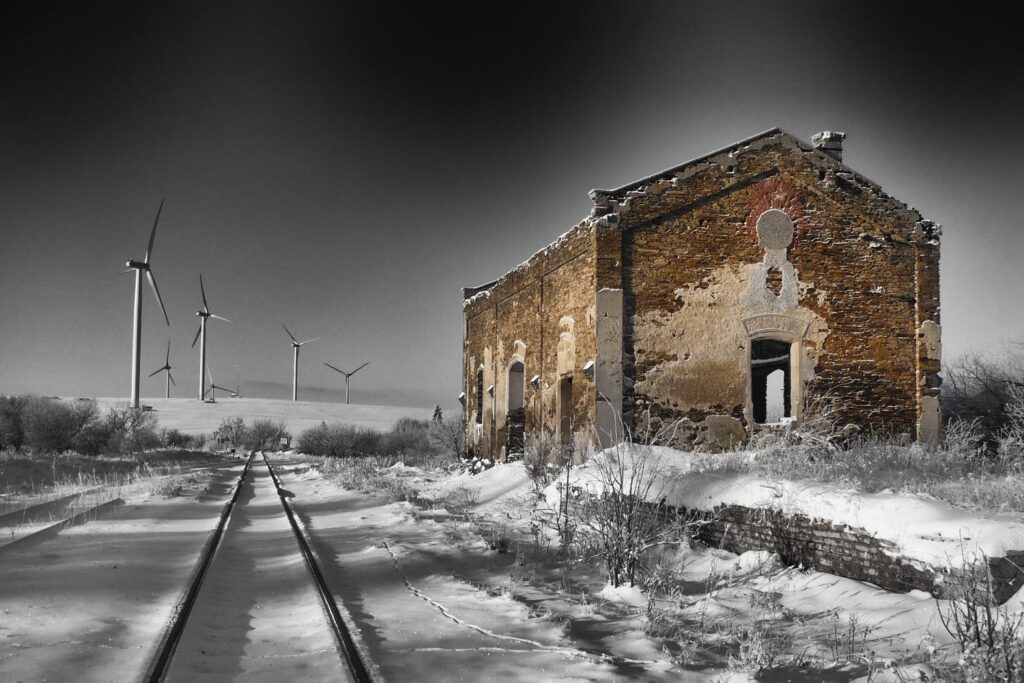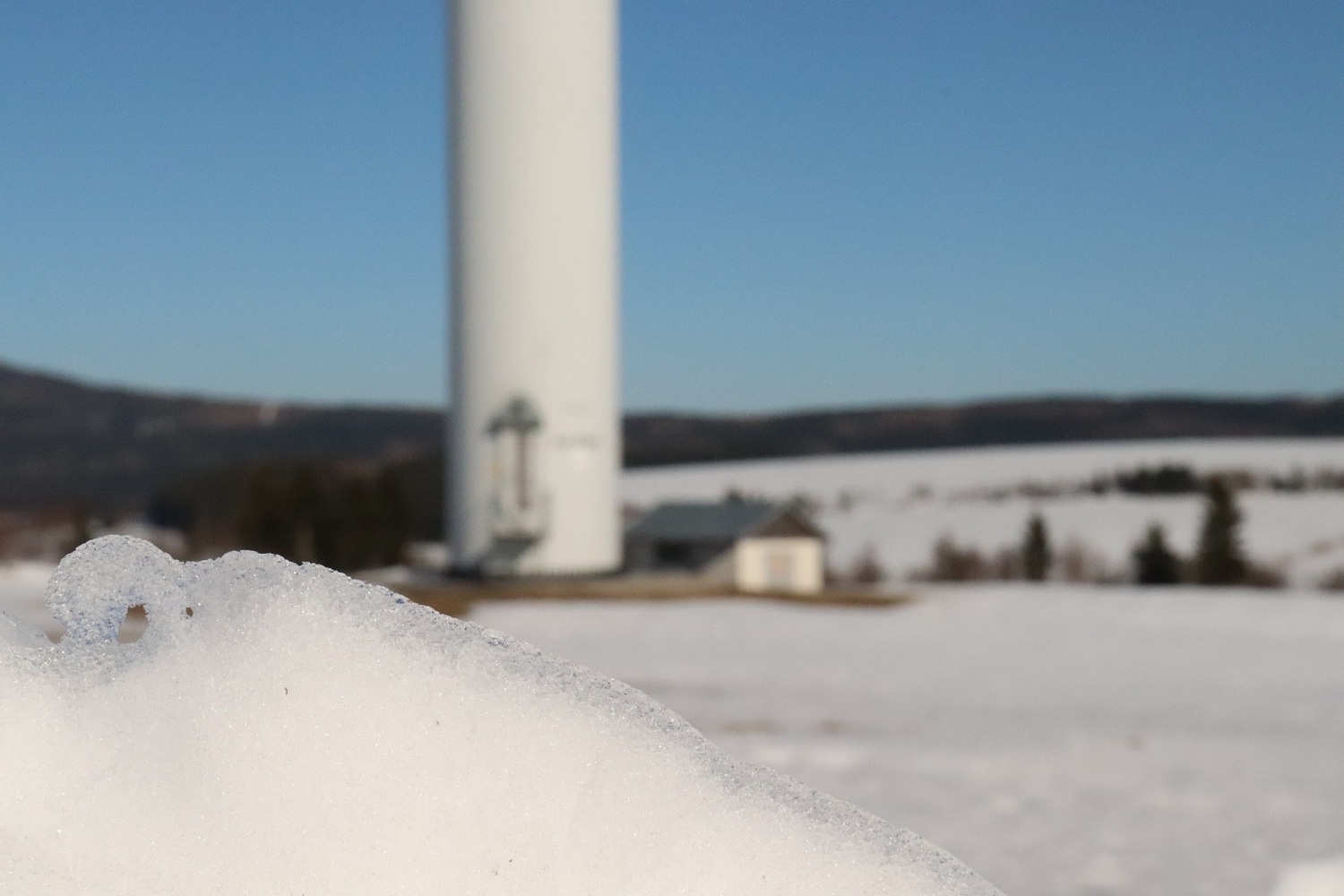I spoke with a transmission lineman not long ago who helped connect a Southern Alberta wind plant to the grid. “Those things are a scam,” he scoffed. “They take more from the grid than they give.”
That’s partly true. According to wind turbine service technician, Dillon Bothwell, industrial-scale turbines can draw as much as 150kWh/day off the grid while they stand idle, waiting for wind.1 Compare that to the average Alberta home that draws around 20kWh/day.2 An idle turbine is thus drawing the equivalent of nearly 8 homes. The proposed Buffalo Plains wind plant in Southern Alberta, which consists of 83 turbines, would use the equivalent power of 664 homes on a calm day. But that may be a totally different story in the winter.
A Cold Dilemma
Research shows that ice can build up to a foot on the edges of blades, disrupting their aerodynamic qualities and causing turbines to drop by 80% in energy production as they slow down, or even stop.3 This is a huge deal in long, wintery climates like Alberta. According to a Canadian Government study based on actual measurements,
…icing can occur up to 20% of the time between the months of November and April… With the installation of “cold weather packages” which provide heating to turbine components such as the gearbox, yaw and pitch motors and battery, some turbines can operate in temperatures down to -30C. Various types of rotor blade de-icing and anti-icing mechanisms, such as heating and water-resistant coatings are currently being employed, as well as operational strategies to limit ice accumulation.
“Wind Energy in Cold Climates”, December 21, 2017

Heating elements are run through the carbon fibres of the blades to heat their leading edge. But with blade lengths running into 80m or more, that’s a lot of heating. Add in the heating of the other components and suddenly turbines are drawing a massive amount of power from the grid. Wind turbines require power for following:
• Yaw mechanism to keep the blade assembly perpendicular to the wind. • Turbine blade-pitch control to keep the rotors spinning at a regular rate. • Lights, controllers, communication, sensors, metering, data collection, etc. • Heating the blades – this may require 10%-20% of the turbine’s nominal (rated) power heating and dehumidifying the nacelle. • De-humidification of the nacelle must be expected during periods with increased humidity, low temperatures and low wind speeds. • Oil heater, pump, cooler, and filtering system in gearbox hydraulic brake to lock the blades in very high wind. • Thyristors to graduate the connection and disconnection between generator and grid. • Magnetizing the stator — the induction generators used in most large grid-connected turbines require a “large” amount of continuous electricity from the grid to actively power the magnetic coils around the asynchronous “cage rotor” that encloses the generator shaft; at the rated wind speeds, it helps keep the rotor speed constant, and as the wind starts blowing it helps start the rotor turning (see next item); in the rated wind speeds, the stator may use power equal to 10% of the turbine’s rated capacity, in slower winds possibly much more. • Using the generator as a motor (to help the blades start to turn when the wind speed is low or, as many suspect, to maintain the illusion that the facility is producing electricity when it is not, particularly during important site tours or noise testing (keeping the blades feathered, ie, quiet)) — it seems possible that the grid-magnetized stator must work to help keep the 40-ton blade assembly spinning, along with the gears that increase the blade rpm some 50 times for the generator, not just at cut-in (or for show in even less wind) but at least some of the way up towards the full rated wind speed; it may also be spinning the blades and rotor shaft to prevent warping when there is no wind. (Source: coherence.com)
But try and find out just how much power all this is using… and conspicuously, this information is almost entirely absent — wind manufacturers don’t publish how much power their turbines consume.4 One University of Minnesota study in 2012 actually measured the power draw, and the results were alarming.5
We did find one engineering site that estimates the energy consumption to de-ice one blade:
The outer third of the blade and most of the blade’s leading edge are heated, since this is where icing is likely to occur. Since these turbines are utility-scale, a small amount of grid power (up to 150 kW) is used to run the heating system.
“De-Icing Wind Turbines”, December 7, 2013, engineering.com
We found data from wind manufacturer, Vesta, published by the Austrian Ministry of Transport, Innovation and Technology, showing 50kwh maximum draw/blade.6
That was written 11 years ago when turbines were much smaller. It also doesn’t account for the heating of the rest of the unit. Even so, at 150kW/blade for de-icing,7 plus 150kWh for just idling, one turbine is drawing a minimum of what approximately 32 homes would use in an entire day (not including power draw to heat other components). So a single wind farm could potentially be drawing the equivalent power of an entire town on days when there’s no wind, or the turbines are idled when it’s too cold. Indeed, even with these cold weather packages, turbines will still begin to shut down in temperatures around -28C, as we witnessed in Alberta earlier this year. Notes turbine manufacturer, General Electric:
For CWE (Cold weather extreme turbines), the electrical components, gearbox and generator are designed to survive, not operate, down to -40ºC (-40ºF)” (emphasis added).
“Disappearing wind turbines almost leaves Alberta, Canada in the dark”, January 18, 2024, americanexperiment.org

Brian Christley of Conwy in Wales wrote The Daily Telegraph observing at the time that: ‘Over the weekend just gone – the coldest of the year so far – all 100-plus offshore wind turbines along the North Wales coast were idling very slowly, all using grid power for de-icing and to power their hydraulic systems that keep the blades facing in the same direction.’8 Wind corporations downplay this, claiming that their turbines return more power to the grid than what they take.
But that, too, is a half-truth. If turbines are shut down to de-ice, or there’s simply no wind, the grid is not only not gaining anything but losing power — a lot of power — to idling wind plants.
On January 13, 2024, Alberta’s power grid almost failed as wind factories across the province ground to a halt when temperatures plummeted. Everyone, including the Premier, was talking about the failure of renewables to produce that night. But no one has talked about how much these turbines were actually pulling from the grid as they idled to stay warm or de-ice their blades…
- Quora[↩]
- bluettipower.ca[↩]
- March 4, 2021, Iowa State University[↩]
- aweo.org[↩]
- windfarmrealities.org[↩]
- cf. windren.se[↩]
- see here and here[↩]
- dailymail.co.uk, 2015[↩]
Mark Mallett is a former award-winning reporter with CTV Edmonton and an independent researcher and author. His family homesteaded between Vermilion and Cold Lake, Alberta, and now resides in the Lakeland region. Mark is Editor in Chief of Wind Concerns.



Well I learned something new… thank you Mark. I did not realize just how much power the turbines draw.
My question is – who pays for the power a turbine draws/uses?
Is it considered an end user?
Is the cost for what they draw offset down the line and that is why electricity rates are so much higher when wind turbines are involved? Or is this why our electricity rates have jumped – we ar3npaying for it?
Should everyone else suffer a black out due to cold temps and not enough “juice” to supply power to both regular users and de-icing turbines?
Do the turbines get preferential treatment and supply is given them first?
Seems to me their clean energy production has got some dirty secrets…